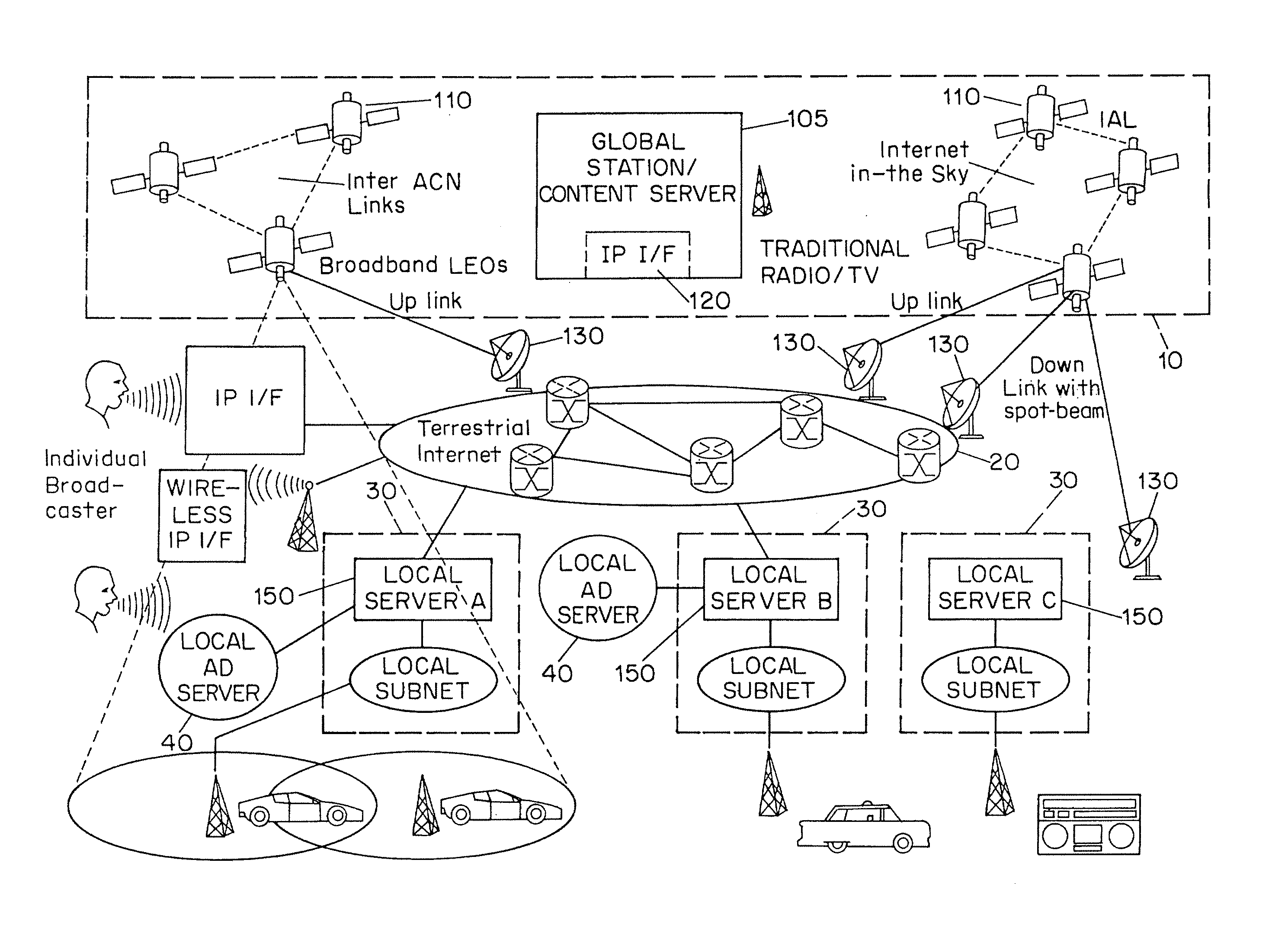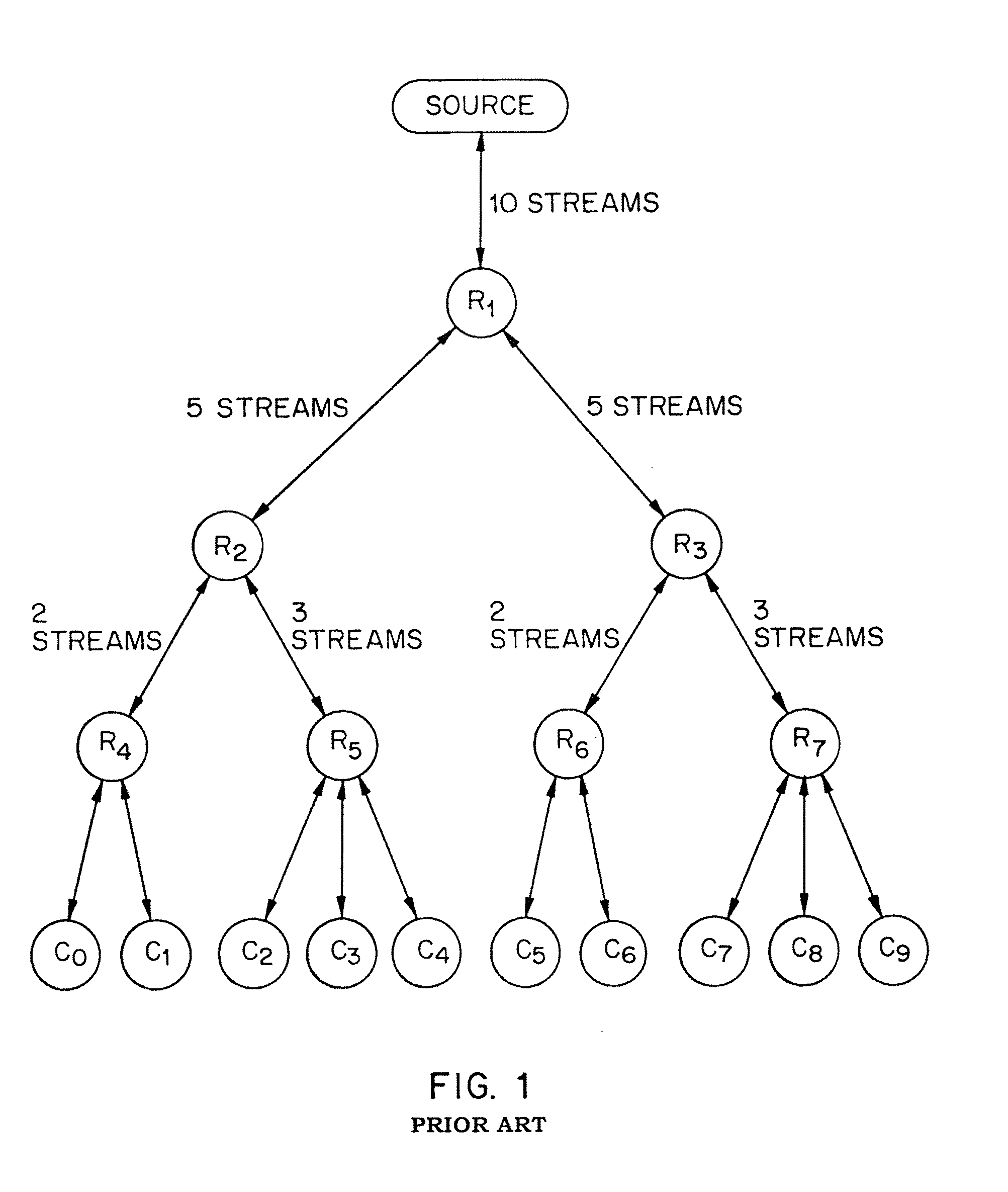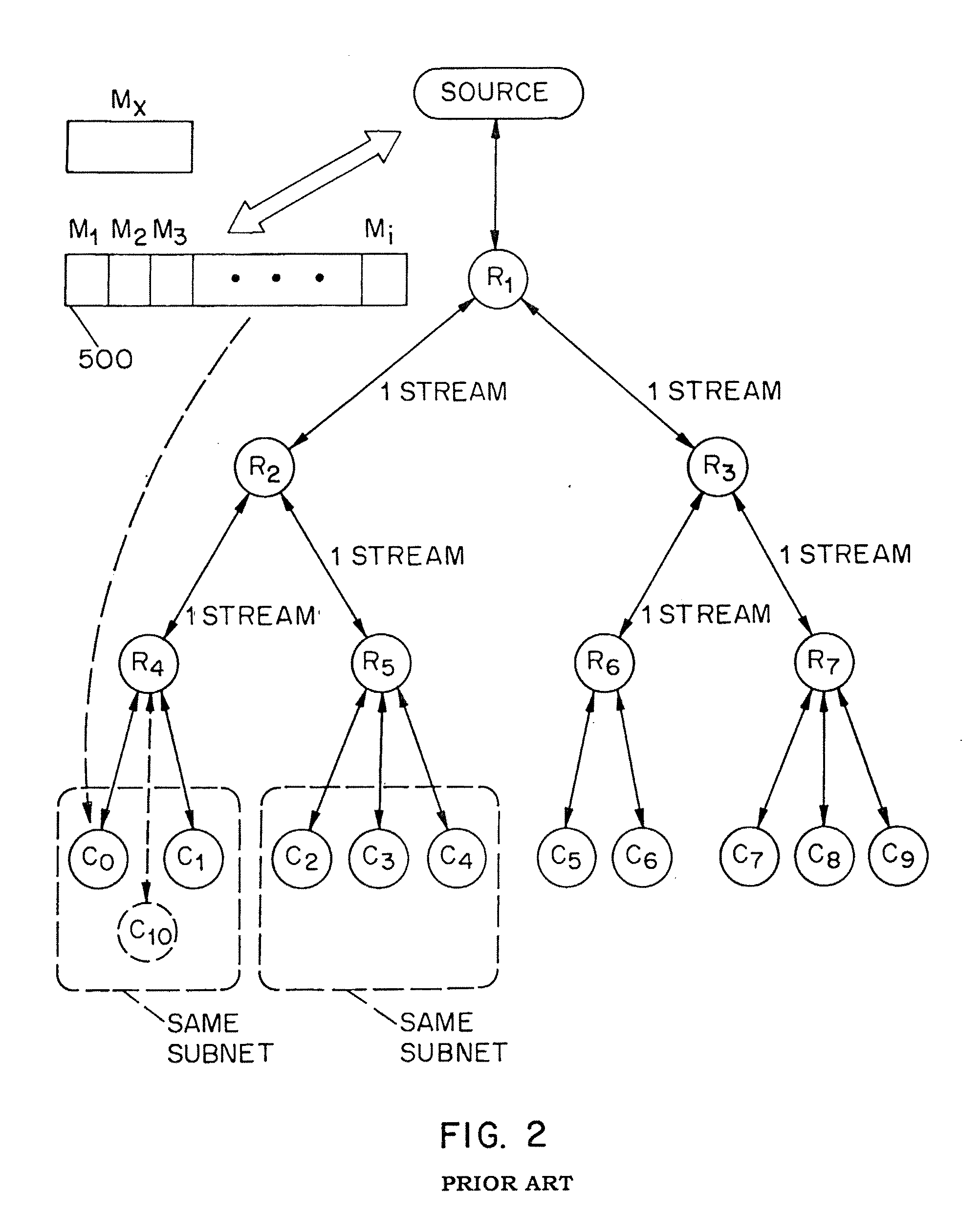System and method for receiving over a network a broadcast from a broadcast source
a technology of a network and a client, applied in the field of system and method for providing a broadcast over a network to a client, can solve the problems of demise of the internet, limited number of radio stations that can legally transmit their broadcasts in a particular area, and no effective solution to expand the number of radio broadcasts on the internet, so as to achieve the effect of maximizing the deployability and fast re-configuration
- Summary
- Abstract
- Description
- Claims
- Application Information
AI Technical Summary
Benefits of technology
Problems solved by technology
Method used
Image
Examples
Embodiment Construction
A. System Architecture
[0044]An exemplary embodiment of the system according to the present invention is shown in FIG. 3. The illustrated exemplary embodiment includes four functional components, I.e., a Radio Station Client (RSC) 10 or a Primary Station, a Radio Antenna Server (RAS) 30 or a local station, an Advertisement / Media Arrangement (AMA) 40 and at least one Internet Multimedia Client (IMC) 50. It should be understood that RSC 10 can be a television station client, and RAS 30 can be a television antenna server. IMC 50 can be a car radio or another reception unit which is capable of receiving a multicast broadcast. Such car radio may be an Internet-capable Radio as shall be described in further detail below. In operation, RSC 10 (e.g., a computing device with IP interface) transmits a global multimedia broadcast via a communications network 20 (e.g., the Internet). RAS 30 (e.g., also a server) can receive the global broadcast from the communications network 20, and make this b...
PUM
 Login to View More
Login to View More Abstract
Description
Claims
Application Information
 Login to View More
Login to View More - R&D
- Intellectual Property
- Life Sciences
- Materials
- Tech Scout
- Unparalleled Data Quality
- Higher Quality Content
- 60% Fewer Hallucinations
Browse by: Latest US Patents, China's latest patents, Technical Efficacy Thesaurus, Application Domain, Technology Topic, Popular Technical Reports.
© 2025 PatSnap. All rights reserved.Legal|Privacy policy|Modern Slavery Act Transparency Statement|Sitemap|About US| Contact US: help@patsnap.com



